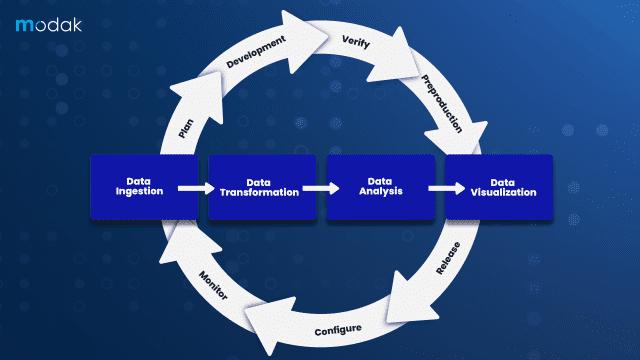We are witnessing a silent revolution in the world of data management. It is a shift that is redefining how organizations think about data, its potential, and its role in driving business growth. This revolution is powered by DataOps 2.0, an improved version of DataOps that smoothly incorporates automation to change data management procedures from a tedious task into a streamlined, efficient operation.
In the past, data management has been seen as a necessary but taxing aspect of business operations. As data volumes increased, so did the complications of data management. Traditional data management solutions had several drawbacks, such as rigid processes, data silos, and limited flexibility. The introduction of DataOps, which emphasizes collaboration between operations teams, data scientists, and data engineers to handle data more efficiently, brought about a long-overdue change. But DataOps needs to change too and that is where DataOps 2.0 got its start.
This is not just an upgrade; this new DataOps phase is a fundamental shift. Automation is essentially a force multiplier that eliminates human error, expedites processes and enhances scalability. In DataOps 2.0, automation serves to enhance human creativity rather than to replace it, freeing up data professionals to concentrate on bigger and more complex tasks like strategy and innovation.
Automation: The Engine of DataOps 2.0
The foundation of DataOps 2.0 is automation, which involves previously unimaginable levels of efficiency. Imagine the traditional data pipeline, an intricate network of data extraction, transformation, and loading (ETL) procedures that were frequently needed for repeated manual intervention. These procedures are optimized via automation, which lowers the possibility of mistakes and guarantees smooth data flow across the organization.
For example, real-time problem detection and rectification can now be achieved by integrating automated data quality checks straight into the pipeline. This drastically cuts down on the amount of time needed for rework and troubleshooting while also guaranteeing that the data is precise and dependable. Furthermore, without requiring human interaction, automated workflows can adapt to changes in data sources or schemas, enhancing the process’ resilience and adaptability.
However, automation has an impact outside of the technological domain. Data teams can focus on strategic projects instead of operational tasks when automation frees up time and resources. As a result, more time will be dedicated to analysis, outcome forecasting, and innovation acceleration—all of which increase a company’s ability to compete and adapt.
Agility is becoming a need rather than a luxury. Automation is at the heart of DataOps 2.0, which gives modern businesses the agility they need to stay on top of trends. The ability to scale up or down automated data pipelines in response to demand guarantees that the data infrastructure is always in line with business requirements. This degree of adaptability is essential in evolving markets.
Automation also improves collaboration among teams. Teams can function better and overcome the barriers that have historically hampered data initiatives with the help of automated workflows and standardized processes. Because insights can be shared and acted upon faster in this setting, decision-making can occur more quickly, resulting in an enhanced dynamic business strategy.

The Role of AI in DataOps 2.0
Artificial Intelligence (AI) plays a crucial role in the evolution of DataOps 2.0. Automation driven by AI moves beyond straightforward rule-based processes and into the domain of intelligent decision-making. AI, for instance, can anticipate possible bottlenecks in data pipelines and provide modifications before problems occur. Additionally, it can automatically classify and tag data, which facilitates teams’ ability to locate and use the information they require.
Furthermore, AI-driven automation can personalize data management processes based on the specific needs of different departments or projects. This level of customization ensures that data operations are not only efficient but also aligned with the strategic goals of the organization.
Modak's Approach to DataOps 2.0
At Modak, we understand that the future of data management is in the smooth blend of human knowledge with automation. To enable businesses to fully utilize their data, our approach to DataOps 2.0 is focused on building automated, scalable, and resilient data ecosystems. We leverage the latest technologies and deep domain expertise to design data pipelines that are not only efficient but also adaptable to the ever-changing business landscape.
We help organizations achieve increased agility, better data quality, and faster time-to-insight with our DataOps 2.0 solutions. We allow data teams to concentrate on what they do best—creating innovation and adding value to the business—by automating repetitive operations. The importance of automation in data management will only increase in the future. DataOps 2.0 is only getting started. The distinction between human and machine capabilities will probably become even more hazy in the next wave of innovation as AI and machine learning are more integrated into data operations. Businesses that welcome these developments will be in a better position to handle the challenges and use data as a genuine strategic advantage.


